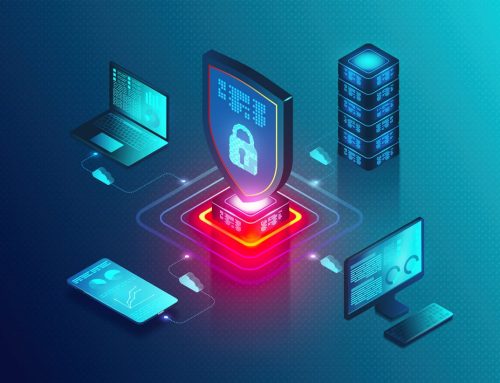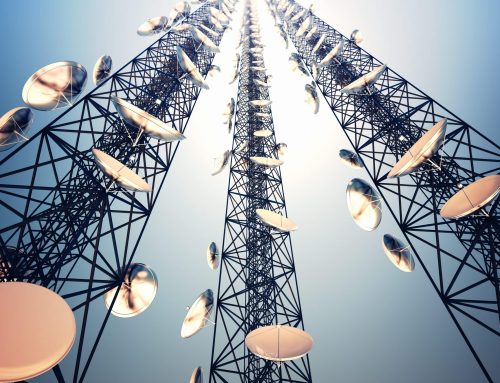In today’s interconnected world, the protection of government buildings has gone beyond traditional physical measures. Government building security has expanded to include not only tangible defenses but sophisticated — often hidden — technologies.
From navigating the intricate web of cyber threats to addressing the nuances of physical security, the challenges are multifaceted. In order to safeguard employees and critical assets, it’s important to take the necessary precautions and understand the best practices for government building security.
What Type of Threats do Government Buildings Face?

Government buildings face a large range of threats that span both physical and digital realms. Understanding and mitigating these threats is crucial for maintaining the security and functionality of these facilities. Some common threats faced by government buildings include:
Physical security threats
- Terrorism – Government buildings are often targets for terrorist attacks due to their symbolic importance. Explosive devices, armed assaults, and other violent acts pose significant threats.
- Unauthorized access – Intruders attempting to gain unauthorized entry for theft, espionage, or to cause harm can compromise the safety and confidentiality of government facilities.
- Insider threats – Threats from within, such as disgruntled employees or contractors with access to sensitive areas, can pose serious risks to government security.
Cybersecurity threats
- Cyber espionage – State-sponsored actors or criminal organizations may attempt to infiltrate government networks to steal classified information or gain intelligence.
- Ransomware attacks – Malicious software can encrypt critical data and demand a ransom for its release, disrupting government operations and potentially compromising sensitive information.
- Phishing – Cyber criminals often use deceptive tactics to trick government employees into revealing sensitive information or providing access to secure systems.
Technological threats
- Electronic surveillance – The use of unauthorized surveillance devices, such as hidden cameras or cell phones, can compromise the confidentiality of discussions within government buildings.
- Jamming and interference – Disruption of communication systems through jamming or interference can negatively impact critical government services and compromise emergency response capabilities.
To address these multifaceted threats, government security measures must encompass a combination of physical security enhancements, cybersecurity protocols, employee training, and emergency response planning. Regular assessments and updates to security measures are crucial to staying ahead of evolving threats in an ever-changing landscape.
How to Improve Building Security

Improving building security involves a comprehensive approach that addresses physical, technological, and procedural aspects. A few key strategies to enhance building security are below.
Risk assessment
During the risk assessment phase, it is essential to conduct a thorough analysis specific to the building and its surroundings. This involves evaluating potential threats ranging from terrorism and cyberattacks to natural disasters and internal risks. The objective is to identify vulnerabilities and prioritize security measures based on the potential impact of these risks.
Access control
The implementation of a robust access system is crucial for regulating entry and exit points. Utilizing key cards, biometric authentication, or smart credentials ensures secure access. It is equally important to regularly review and update access permissions to align with changes in personnel and evolving security requirements.
Surveillance systems
Install a comprehensive CCTV surveillance system that includes advanced features such as cell phone detectors. These detectors play a crucial role in identifying and tracking mobile devices and hidden body cameras, providing an additional layer of security. To maximize effectiveness, integrate these detectors in areas where unauthorized use of mobile phones could pose a security risk, such as sensitive meeting rooms or restricted zones.
Cybersecurity measures
Addressing cybersecurity concerns is fundamental. Cybersecurity protocols must be implemented to safeguard against cyber threats. Regularly updating software and firmware is essential to patch vulnerabilities. You should also conduct regular cybersecurity training for staff to empower them in recognizing and mitigating phishing and other cyber threats effectively.
Benefits of Having Building Security Measures in Place
Implementing security measures within government buildings is crucial for the protection of critical assets, public safety, and operation of essential institutions. Security protocols play a pivotal role in safeguarding physical assets, including government property, confidential documents, and valuable resources, helping to mitigate the risk of theft, vandalism, or damage.
Visible security tactics such as surveillance cameras, access control systems, and trained security personnel act as powerful deterrents. These measures not only prevent unauthorized access to sensitive areas but also discourage potential criminal activities, contributing to the overall safety of government facilities.
In the digital realm, cybersecurity measures are crucial for protecting sensitive government information from unauthorized access. With the ever-present threat of cyberattacks, robust security protocols help prevent data breaches and ensure the confidentiality of classified information, adhering to stringent privacy regulations.
The impact of security measures extends beyond the confines of individual government buildings, contributing to the safety and security of the broader community. By prioritizing security, government institutions play a vital role in promoting overall social well-being and public trust in the governance system.
Balancing Security and Privacy

Balancing security and privacy is a nuanced job within the realm of government building security. While public safety and the protection of assets are paramount, it is equally essential to respect and uphold the privacy rights of individuals within these spaces. Finding this equilibrium requires thoughtful consideration of the technologies and protocols implemented.
Advanced security solutions, such as Cellbusters Zone Protector, play a pivotal role in this balance by focusing on specific threats, such as unauthorized cell phone usage, without compromising personal privacy. By targeting and managing potential security risks from mobile devices, this technology ensures that the security measures respect individual rights. Government institutions must navigate this fine line and find innovative solutions that not only improve security but also uphold the principles of privacy that power democratic societies.
As the digital landscape evolves, finding this equilibrium becomes increasingly crucial, and technologies like Cellbusters Zone Protector exemplify a commitment to both security and privacy within the governmental context.
Protect Your Building Security with Cellbusters
Safeguarding government buildings is paramount to ensuring national security and the smooth functioning of democratic institutions. As the world faces evolving threats, it is imperative for governments to proactively adopt advanced security measures.
By investing in cutting-edge solutions, governments can demonstrate their commitment to the safety of citizens, confidential information, and the integrity of the democratic process. As we navigate an increasingly complex security landscape, embracing innovative tools becomes not just a necessity but a strategic move in protecting government buildings.







